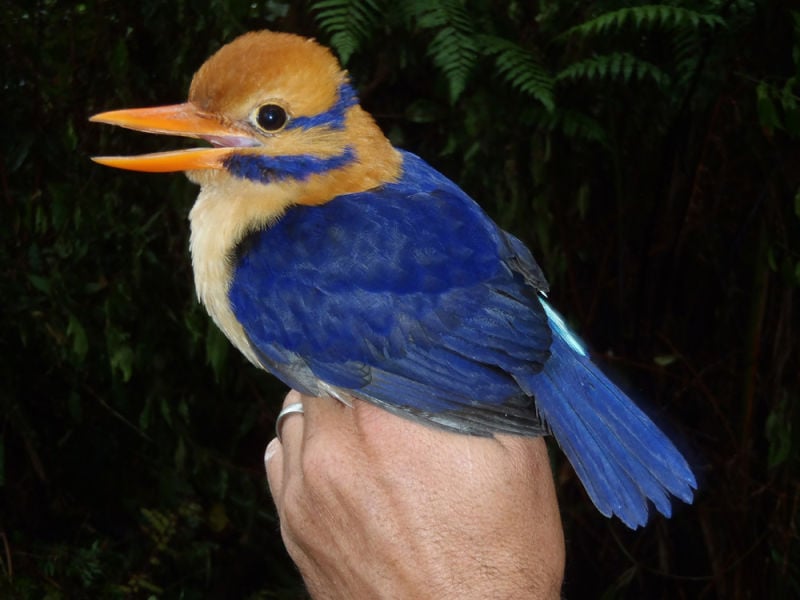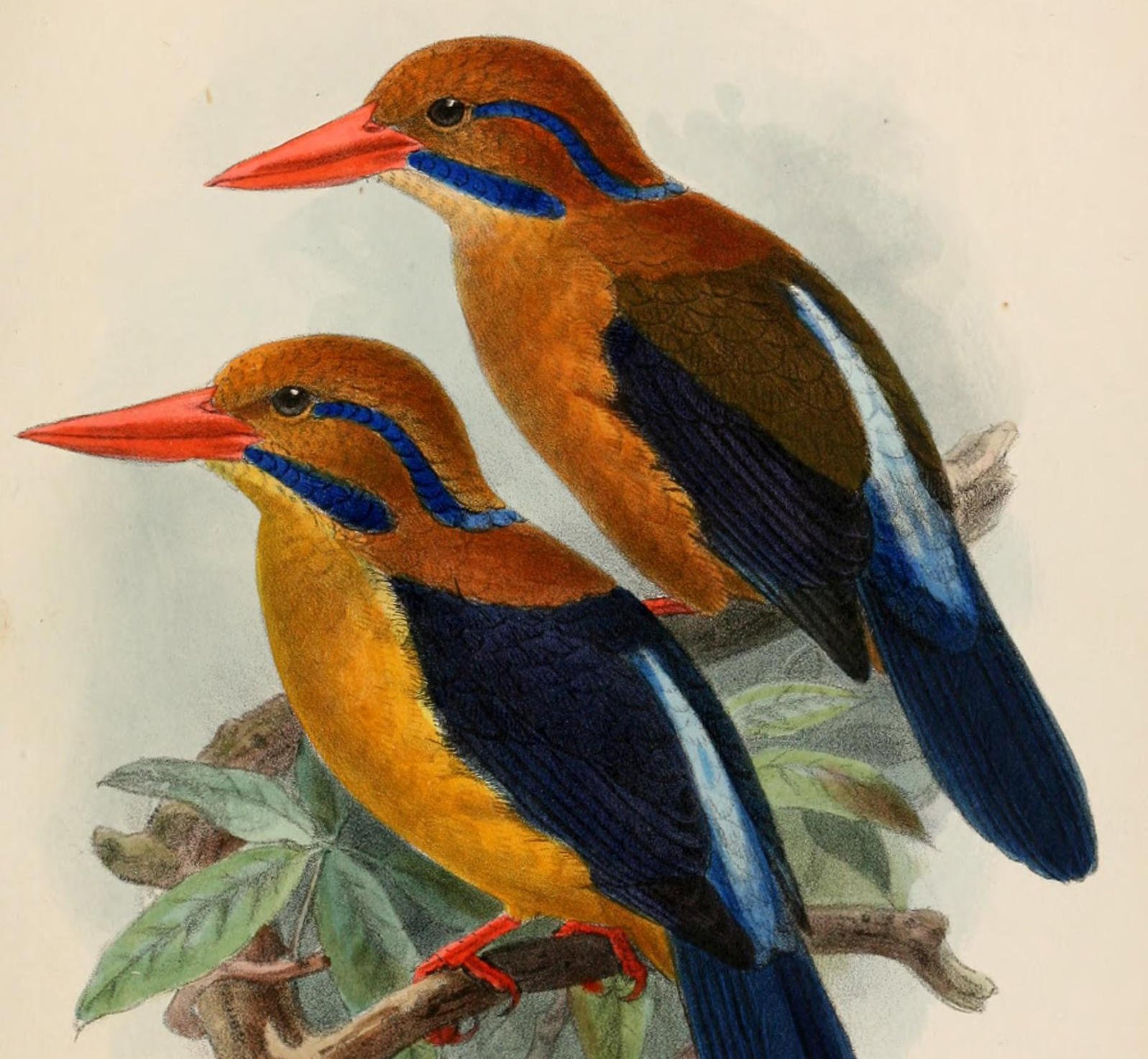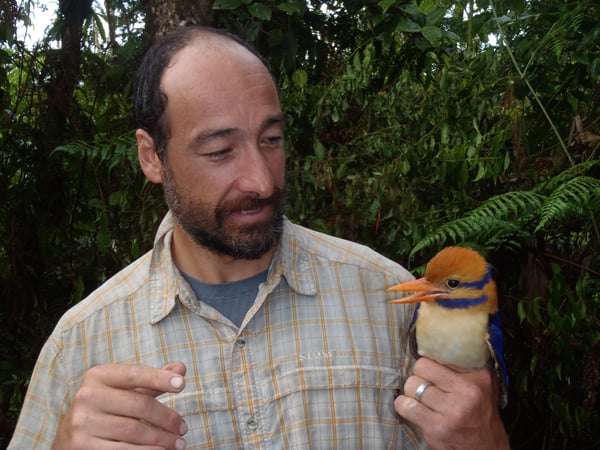Art World
Outrage as New York Museum Researcher Kills Rarely Seen Bird
The moustached kingfisher was killed in the name of science.

The moustached kingfisher was killed in the name of science.

Animal rights activists are outraged at a researcher at New York’s American Museum of Natural History over the death of a previously unobserved bird. Scientist Christopher Filardi captured the bird during a museum expedition to Guadalcanal Island, the largest of the Solomon Islands. The first person to see a moustached kingfisher in over half a century, Filardi promptly “collected” the bird by killing it for research purposes.
The kingfisher is what’s known as a “ghost species,” a reclusive animal that has eluded scientific study and is rarely, if ever, encountered by humans. Prior to Filardi’s discovery, the bird had never been photographed, and only been glimpsed in the wild once. Female specimens had been collected in the 1920s and 1950s, but until the recent find, the male had never been spotted.
By collecting the bird, Filardi, who is the director of Pacific Programs at the museum’s Center for Biodiversity and Conservation, was able to preserve it as a scientific specimen—but his actions have been widely decried on the Internet.

J.G. Keulemans, print of the male and female of the Bougainville Moustached Kingfisher (1905), closely related to the recently spotted Guadalcanal Moustached Kingfisher.
Photo: J.G. Keulemans, Novitates Zoologicae.
“To search for and find an animal of a rare species—an individual with feelings, interests, a home, and perhaps a mate—only to kill him is perverse, cruel, and the sort of act that has led to the extinction of other animals who were also viewed as ‘specimens,'” PETA senior director Colleen O’Brien told the New York Daily News. “All that was needed to document this rare bird was compassion, awe, and a camera, not disregard and a death warrant.”
In a blog post for the museum, Filardi described his first encounter with the bird in awed tones, writing “one of the most poorly known birds in the world was there, in front of me, like a creature of myth come to life.”
Filardi later defended his actions at the National Audubon Society, noting that euthanizing the bird “was neither an easy decision nor one made in the spur of the moment.” He added that collecting a specimen was “standard practice for field biologists.”

Chris Fildardi with the moustached kingfisher.
Photo: © R.Moyle, M. Janda, S. Galokale, courtesy the American Museum of Natural History.
The biodiversity survey on the Solomon Island had not found one lone kingfisher, but evidence of a thriving population of some 4,000 birds. “There has been a perception of rarity because so few outside people or scientists have seen or otherwise recorded the bird,” Filardi noted. “This is a bird that is poorly known and elusive to western science—not rare or in imminent danger of extinction.”
According to the IUCN Red List of Threatened Species, “this spectacular species is judged to be endangered on the basis of a very small estimated population, which is suspected to be declining, at least in part of its range. However, further research may reveal it to be more common.”
During the fallout following the death of Zimbabwe’s Cecil the Lion at the hands of American dentist Walter Palmer, artists were inspired to memorialize the fallen beast in both painting and sculpture. Perhaps the National Audubon Society might consider adding the rare species to its ongoing Audubon Mural Project in upper Harlem?